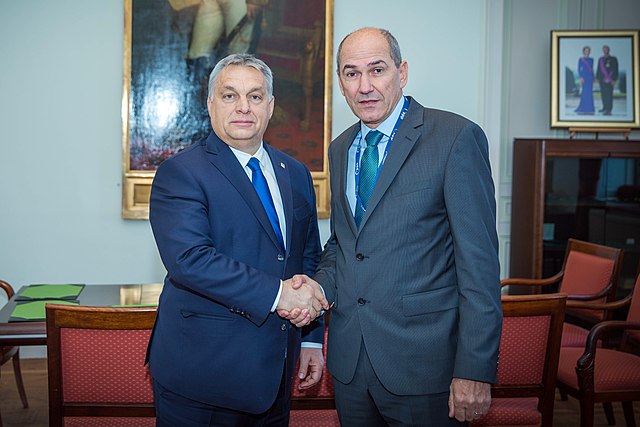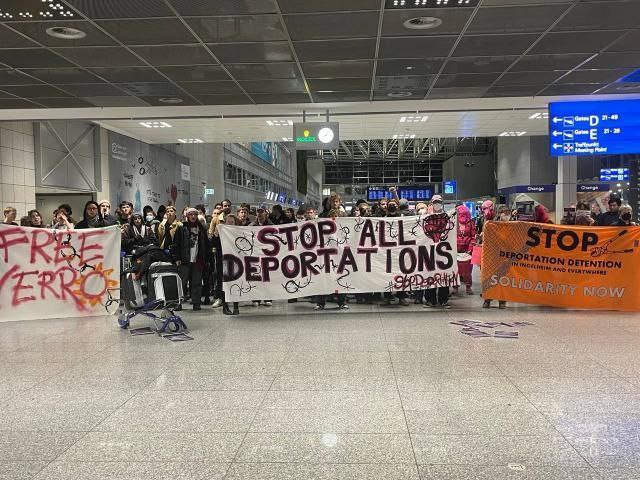by Ana Podvršič and Jaša Veselinović
Less than a year since the start of the coronavirus pandemic, Slovenia barely resembles the country that, for a long time, was seen as a social-democratic outlier in the region. The outbreak of the pandemic coincided with a major political change that brought a far-right Slovenian Democratic Party (Slovenska demokratska stranka – SDS) and its leader Janez Janša to power. From the very beginning, the SDS coalition has been advancing its project of the radical restructuring of the Slovenian state, economy and civil society, in order to further the liberties of capital.
The so-called “Anti-Corona Packages” (ACP), programs of measures formally seeking to attenuate the economic and social crisis related to the epidemic, have been the main vehicle for the right-wing government’s attack on social standards and formal democratic policy-making. Some of the most blatant examples are the exclusion of environmental NGOs from construction permit procedures, and an obligation for the unemployed to take the first job on offer, regardless of qualifications.
Concealing such measures in ACPs elicited bouts of popular revolt; weekly protests that started at the end of last April and soon evolved into mass protesting on bicycles. Not even the summer and a partial lifting of the restrictions halted these protests. Environmentalists, cultural workers and activists from alternative social centers Rog and Metelkova were demanding respect for environmental standards and independent media and civil society, restoration of the rule of law and the government’s resignation.
As the “cycling protests” grew they were met with counter-protests of government supporters, including the prominent participation of neo-Nazi groups. There were also some protests of “corona-sceptics”, a motley crew of conspiracy theorists somewhat similar to the querdenken movement in Germany. With the exception of one 500-strong protest in November, they did not receive popular support and subsided quickly.
At the beginning of February this year, the protest dynamics reached new dimensions, with the so-called “protest of the parents”. After nearly four months of “distance learning” – the most prolonged period of school closures in Europe – the government’s decision to open and then almost immediately close the schools was one measure too many for parents. With protests spontaneously spreading throughout the country and high-school teachers and students joining them, the government backed off and decided to open all primary schools.
The government’s main reaction to the varied contestations was the reinforcement of repressive apparatus and disciplinary techniques. Already during the first lockdown, the police were handing out fines for absurd traffic violations, routinely requiring protesters’ identification and following up with more fines. Physical violence became an important aspect of the repression, as the police are no longer reluctant to use pepper spray on any occasion.
In fact, the pandemic was used as a cover to increase institutional repression through ACP. Police jurisdiction and powers related to public gatherings were expanded; fines for individuals organizing public gatherings were increased to astronomical levels, ranging from €1,200 to €12,000. Finally, under the new rules, outside gatherings of up to ten people are allowed only if the participants do not have the intention of “expressing an opinion” – if they do, they are to be punished.
Speaking of the reinforcement of public repression, the destruction of Rog, Ljubljana’s prominent social center with left-oriented and independent political, social care and cultural activities, by the formally center-left leaning mayor of Ljubljana, Zoran Jankovič, is worth mentioning. With no prior announcement or legal justification, this former CEO of Slovenia’s biggest retail company sent a contingent of anti-riot police, flanked by a private security firm full of Nazi sympathisers, to raze the Rog buildings to the ground. Rog has been a long-term obstacle to the mayor’s profit-oriented plans to transform the space into a “Contemporary Arts Centre.”
Soon after Rog was demolished, a highly symbolic disciplinary intervention took place at Metelkova, Ljubljana’s biggest squat and social center (featuring in Lonely Planet’s tourist guides). Offering no explanation, tens of riot police in full gear took the opportunity of the National Day of Culture to march through Metelkova and bang on the doors of bars and autonomous spaces that have been inactive for months. After one year of the pandemic, seeing robocops on the streets of Ljubljana, known for being a green and family-friendly tourist boutique town, is now becoming as ordinary as seeing people wearing masks.
The current Slovenian government, whose leader is a fervent supporter of Trump and Orbán, has without doubt a strong ambition for the (SDS-) party appropriation of the Slovenian state. Its policies have also opened a window of opportunity for other authorities interested in dismantling and demobilizing left social actions. When it comes to attacking alternative political movements and culture, Janša’s government, the police, and pro-capital-oriented local authorities seem eager to join forces and speed up the anti-democratic and anti-social tornado.
In the context of the largely impotent parliamentary opposition of neoliberal centre parties, to which the Left has aligned itself, the Slovenian government faces few obstacles on its path towards making the most out of the pandemic-induced state of emergency and establishing an SDS-Party State.
This article first appeared in German in the Austrian website Mosaik. Reproduced with permission.




